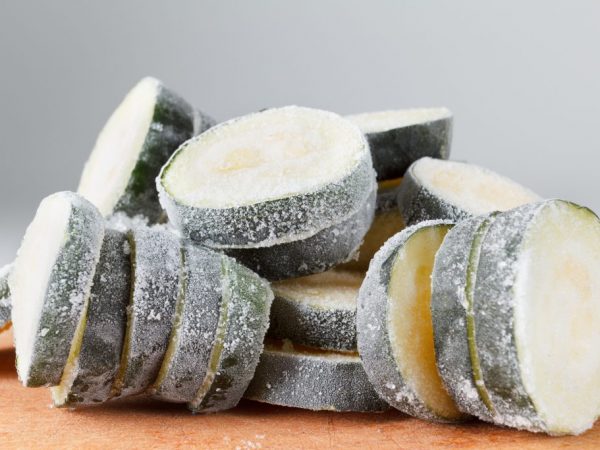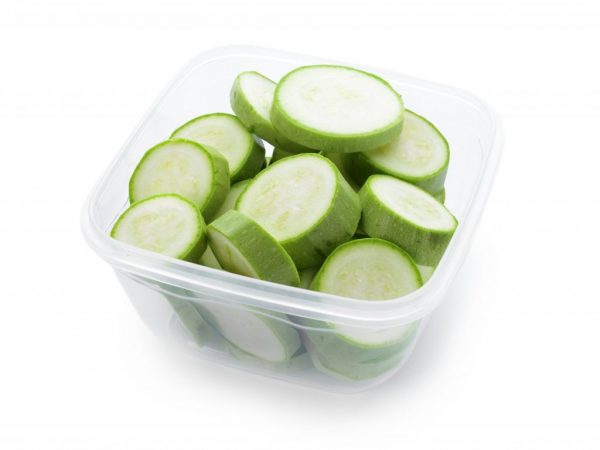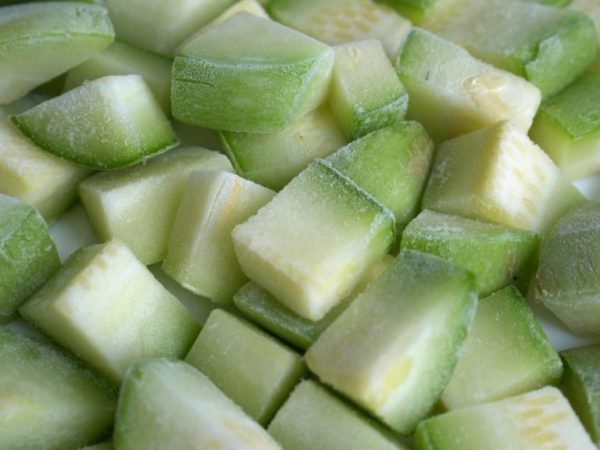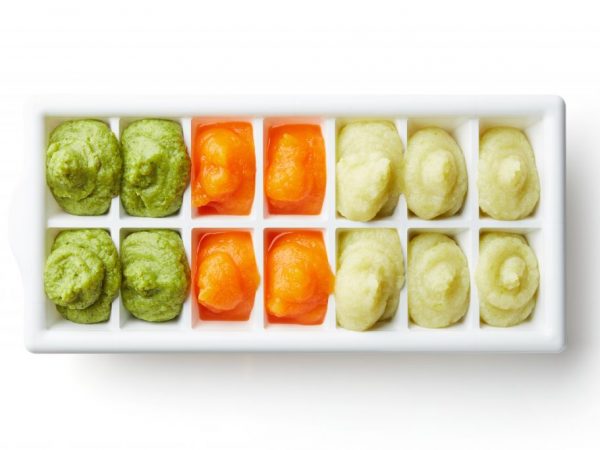Freezing zucchini for the winter
Frozen vegetables are a good alternative to canned foods: vitamins are best preserved in this form, so their role in winter is enormous.

Freezing zucchini for the winter
Consider how to freeze zucchini for the winter at home. We reveal the secrets of experienced housewives.
The benefits of frozen zucchini
Zucchini is very useful for normalizing the water-salt balance in the body by removing excess fluid from it. Due to the content of a large amount of essential elements and vitamins, it is used for many diseases.
Properly freezing zucchini for the winter will ensure that the fruits retain their beneficial qualities until spring.
Nutritionists conducted numerous studies, during which it turned out that they are one of the most inexpensive and reliable sources of substances important for the body during winter: vitamins A, B1, B2, C, PP, trace elements, minerals (among them potassium, iron, magnesium , manganese, phosphorus, selenium, zinc, sodium).
Important information
Frozen zucchini can harm the body only in one case - when thawing and re-freezing. Once thawed, vegetables deteriorate when exposed to air.
How to choose zucchini
Proper preparation for winter storage is very important.
Of course, homemade fruits are the best option for freezing, but if they are not there, you need to make a selection of zucchini.
- They must be young - this can be seen from the thin peel, with small seeds inside.
- The color can be any: green, white, yellow. The main condition is that everything should be fresh, whole, clean, with a shiny skin, without scratches, stains, or rotten places.
Only in this case, the prepared vegetables will retain their vitamins and shape in the freezer throughout the winter.
Sluggish, long-harvested vegetables are not suitable, the same is true for immature or overripe ones.
The next step for proper selection is to pierce the rind: if the zucchini is good, the rind is soft and easily pierced. A hard and hard layer of the skin indicates an overly fibrous pulp.
General rules for freezing

The vegetable must be prepared for freezing.
To properly freeze zucchini, you need to prepare them:
- wash thoroughly;
- spread out on a clean napkin and dry with a paper towel (excess moisture on the surface is not needed) or wipe each fruit well;
- cut off the tails.
There is another option for blanching - hold the vegetables in boiling water for a couple of minutes. You need to put a pot of boiling and a container of cold water next to it. Cut the zucchini into not very large pieces, dip in a colander in boiling water, remove after 2 minutes and immerse in a container to cool. Spread out the pieces to dry.
If someone doubts the taste of the blanks obtained by a similar method, you can simply blanch the sliced zucchini for about 3 minutes, decompose and cool them completely.Then they are ready to be packed and placed in the freezer.
Useful Tips
Young zucchini can be left in the skins for the winter. They usually do not have seeds, but if they are found, the pulp will need to be removed.
If you come across fruits with a thick and coarse peel, they must be peeled and removed from the pulp and seeds.
Procurement methods
You can freeze homemade zucchini for the winter in different ways: fresh and fried. Let's consider the main ones.
In circles
This method is suitable for lovers of fried zucchini and casseroles.
Before the final freezing, they must be prepared in advance: cover the board with plastic wrap, spread the rings 1-1.5 cm thick.Place in this form in the freezer until it freezes completely.
This is done to maintain the shape of the circles so that they do not freeze to each other and break.
Pull out, pack in bags or containers, put back until preparation.
Cubes

Freezing with cubes is convenient to use
Such a blank is convenient to use in winter for soup and stew.
Cut the courgettes into cubes (1-2 cm). Before distribution in bags, blot the juice that has appeared on the slices with a paper towel.
Prepack in small portions (in such portions that it is enough for one time). You can put it in bags, tying them tightly, or in containers, closing with lids. Place in the freezer.
There should be no air in the bags. Spread the bags into a flat layer - this will provide quick cold coverage.
Grated
This method of freezing zucchini requires a medium grater. Grate them, drain the emerging liquid, distribute in a container and put in the chamber.
You can mix it with grated carrots - you get a ready-made mass for vegetable pancakes.
With rice
In combination with the fiber of the zucchini, rice is able to provide the body with energy.
Procurement rules:
- Boil 1 tbsp of washed rice in salted water until half cooked.
- Heat the oil in a cauldron, fry 1 kg of onion in it, add rice, 1 kg of fresh zucchini cut into small pieces, add salt, spices at your discretion.
- Simmer for half an hour, covering with a lid.
- Put the completely cooled mass in containers, put in the freezer.
Fried
You can also stock fried zucchini. You will get a ready-made dish that remains to be heated in the microwave.
To do this, you need to cut vegetables into circles, salt, roll in flour, fry in vegetable oil. Put in a colander, let the excess liquid drain from the vegetables. Leave to cool completely.
Pack in a prepared container, close tightly, tie, place in the freezer.
Puree

Zucchini puree is good for babies
For a child, it is best to freeze it in the form of squash puree: it is useful for newborns, and has a beneficial effect on the digestive tract.
Prepared vegetables are cut into cubes, blanched in boiling water until almost completely cooked, laid out in a colander to drain the liquid. Grind to a puree consistency in a blender.
Mashed potatoes are laid out in portions in containers, tightly closed, placed in the freezer. In this form, puree can be stored for 8 to 10 months. You cannot defrost and refreeze.
For babies, it is advisable to prepare mashed potatoes separately, making it from the youngest vegetables - it will be more tender.
Wholly
Small, young, tender vegetables can be used whole and of course they take up a lot of freezer space. This must be taken into account.
In regions where temperatures are below 10 ° C for most of the year, you can store frozen foods on the glacier, in the basement of the house, etc.
How to defrost properly
Many housewives generally prefer not to defrost vegetables, but immediately use them in dishes.
If necessary, defrost the package or container is left on the shelf of the refrigerator in the room.
In the process, the workpiece emits liquid - it must be drained. This is done with mashed potatoes, zucchini cubes, cubes.
Vegetables are lightly dissolved in circles and fried in the usual way, roll them in flour or batter.
Shelf life
If you freeze fresh zucchini for the winter, they will keep perfectly in the freezer at -12 ° C; - 18 ° C and in a freezer at -24 ° C; -26 ° C. The workpieces can be kept for up to 10 months.
The only requirement is that you should not repeat the procedure again.
For housewives who prepared stocks only with the help of canning, freezing has become even more popular in use.
Firstly, making them is much easier: it takes less time, effort, money.
Secondly, canned fruits retain much less useful properties. And frozen ones will provide the body with vitamins and minerals.

